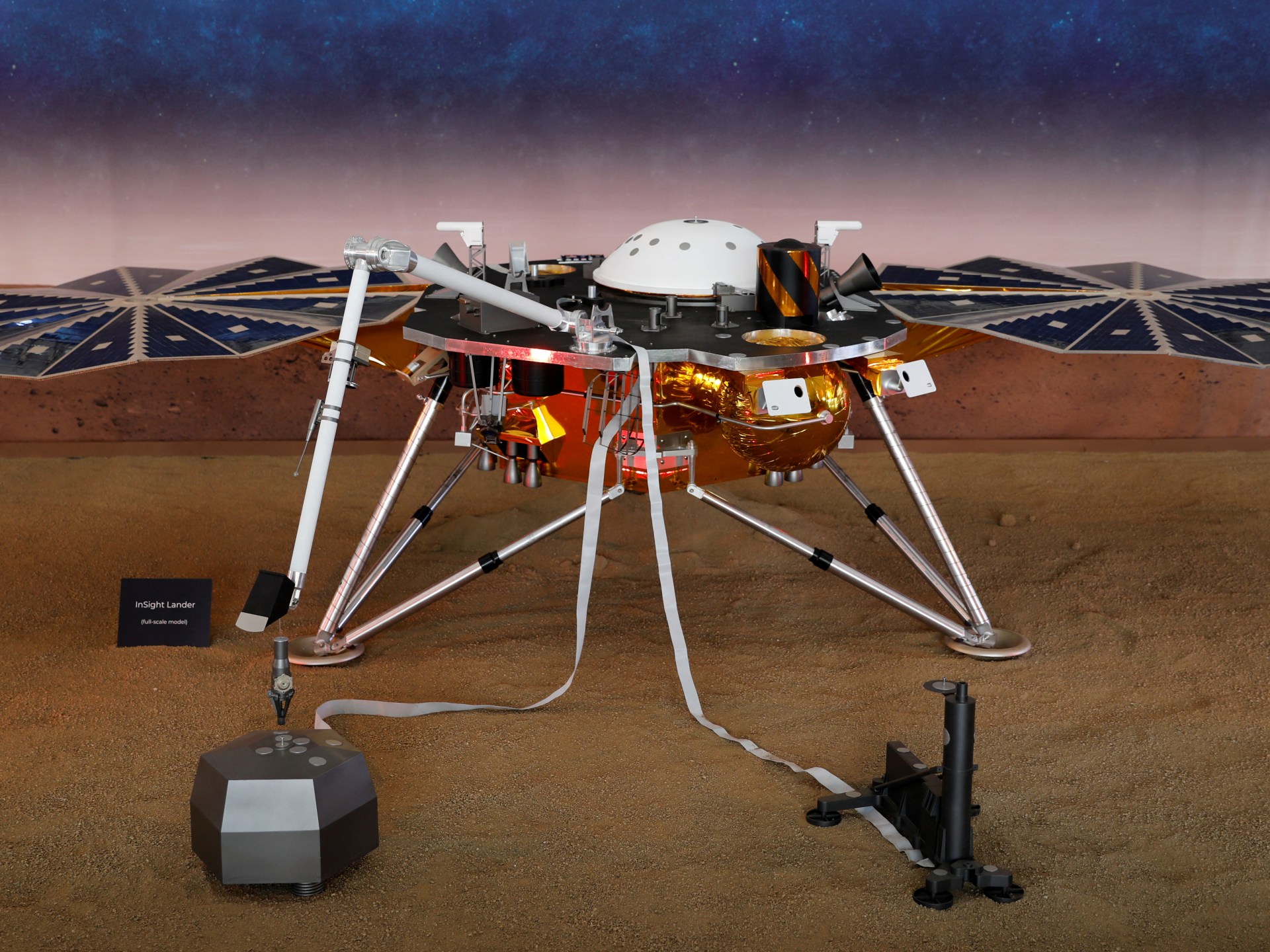
The findings follow analysis of seismic readings from NASA’s Mars InSight lander before it shut down in 2022.
New research suggests there may be enough water hiding in the cracks of underground rocks beneath the surface of Mars to form an ocean.
The findings are based on seismic measurements from NASA’s Mars InSight lander, which detected more than 1,300 marsquakes before it shut down two years ago.
The researchers combined computer models with InSight data, including the quakes’ velocity, to determine underground water was the most likely explanation for the seismic readings. The results were published on Monday in the Proceedings of the National Academy of Sciences.
The water – in fractures 11.5km (7.15 miles) to 20km beneath the surface – was most likely to have collected there billions of years ago when Mars harboured rivers, lakes and possibly oceans, according to the lead scientist, Vashan Wright of the University of California San Diego’s Scripps Institution of Oceanography.
“On Earth, what we know is where it is wet enough and there are enough sources of energy, there is microbial life very deep in Earth’s subsurface,” Wright said. “The ingredients for life as we know it exist in the Martian subsurface, if these interpretations are correct.”
Matthias Morzfeld of the Scripps Institution of Oceanography and Michael Manga of the University of California, Berkeley also authored the paper.
InSight Lander – the Interior Exploration using Seismic Investigations, Geodesy and Heat Transport – was the US space agency’s first craft dedicated to looking beneath Mars’s surface and study its interior.
If InSight’s location at Elysium Planitia near Mars’s equator is representative of the rest of the red planet, the underground water would be enough to fill a global ocean 1-2km deep, Wright added.
It would take drills and other equipment to confirm the presence of water and seek out any potential signs of microbial life.
Scientists have been analysing the data collected by the lander in search of more information about Mars’s interior.
Wet almost all over more than 3 billion years ago, Mars is thought to have lost its surface water as its atmosphere thinned, turning the planet into the dry, dusty world known today.
Scientists theorise that much of this ancient water escaped out into space or remained buried below.
EMEA Tribune is not involved in this news article, it is taken from our partners and or from the News Agencies. Copyright and Credit go to the News Agencies, email news@emeatribune.com Follow our WhatsApp verified Channel





